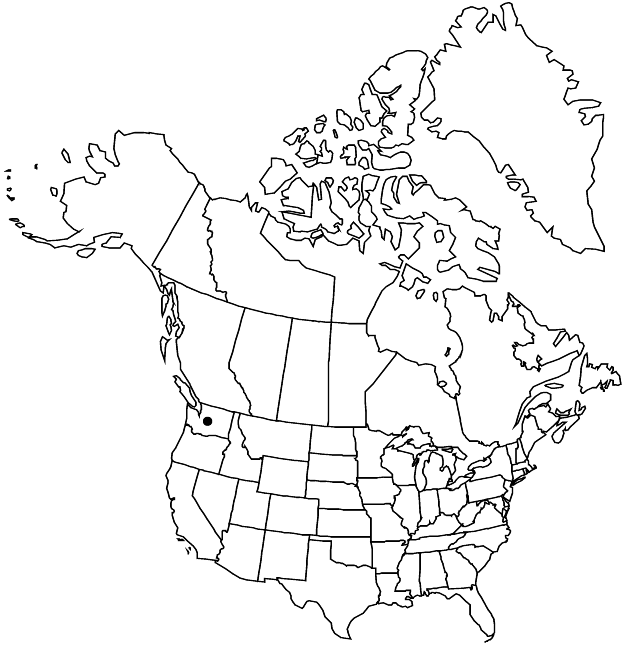Eriogonum umbellatum var. sandbergii
Phytologia 86: 154. 2004.
Subshrubs, sprawling, 1–4 × 2–6 dm. Aerial flowering-stems erect, 1–2.5 (–3) dm, thinly tomentose to floccose, without one or more leaflike bracts ca. midlength. Leaves in loose rosettes; blade elliptic to ovate, 1–2.5 (–3) × 0.5–1.5 (–2) cm, densely lanate abaxially, glabrous or nearly so and bright green adaxially, margins plane. Inflorescences umbellate; branches 0.3–2.5 cm, thinly tomentose to floccose, without a whorl of bracts ca. midlength; involucral tubes 2–3 mm, lobes 1.5–4 mm. Flowers 4–7 mm; perianth bright-yellow.
Phenology: Flowering May–Aug.
Habitat: Sandy to gravelly slopes and ravines, sagebrush communities, montane conifer woodlands
Elevation: 300-1200 m
Discussion
Variety sandbergii is restricted to a series of scattered populations in the foothills and low mountains of the north Cascade Ranges of north-central Oregon (Hood River and Wasco counties) and central Washington (Chelan, Kittitas, Okanogan, and Yakima counties). It appears to be most closely related to the more southern, matted var. modocense.
Selected References
None.
Lower Taxa
"dm" is not declared as a valid unit of measurement for this property."dm" is not declared as a valid unit of measurement for this property."dm" is not declared as a valid unit of measurement for this property."dm" is not declared as a valid unit of measurement for this property."dm" is not declared as a valid unit of measurement for this property.
